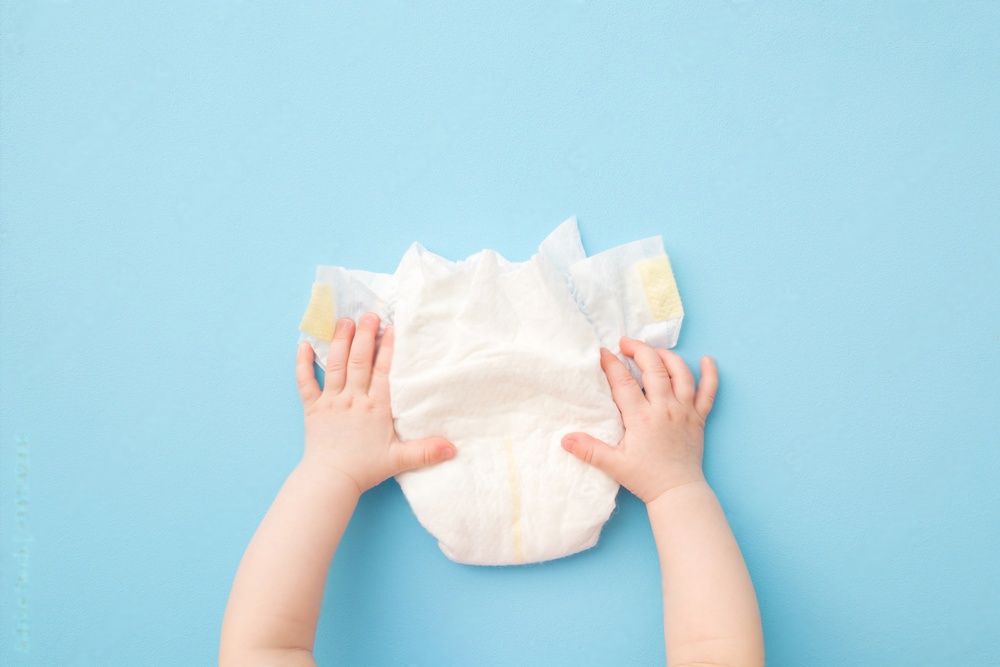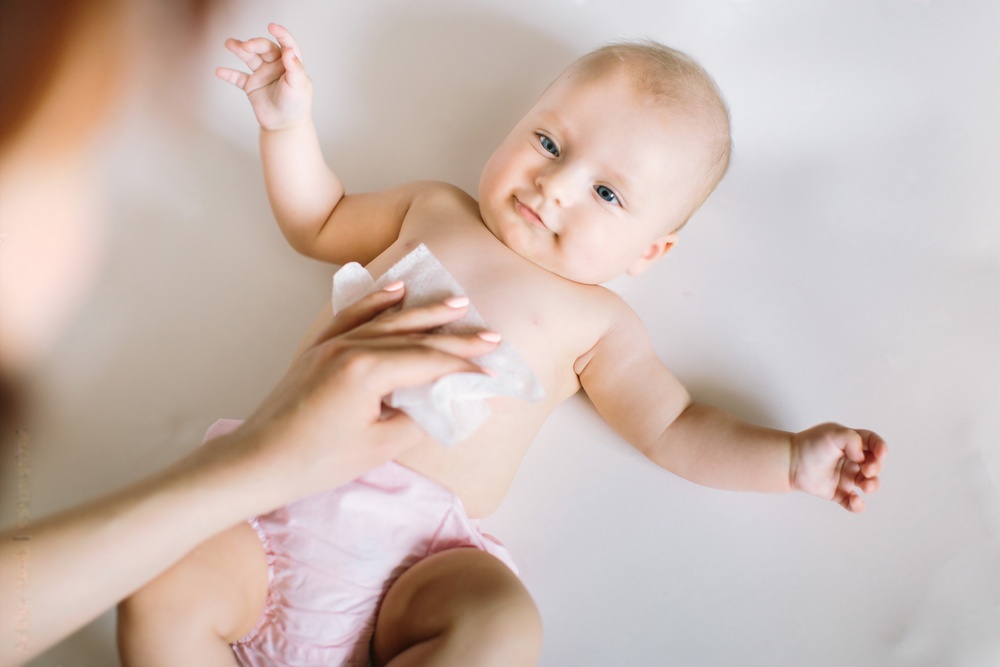In this step-by-step guide, we will show you how to store diapers when they are not in use, ensuring they stay fresh and ready for your little one’s needs. Did you know that the average baby uses around 2,500 diapers in their first year alone? That’s a whole lot of diapers to store! So, let’s dive in and discover the best ways to keep those diapers organized and in pristine condition when they’re not being used.
Choose a suitable storage container
When selecting a storage container for your diapers, it is important to choose one that meets a few key criteria. First and foremost, the container should be clean and dry to ensure that the diapers remain fresh and odor-free. A dirty or damp container could lead to unpleasant smells or even mold growth. Secondly, the container should be large enough to hold an adequate number of diapers. Consider the frequency at which you plan to change diapers and choose a container that can accommodate that amount. Lastly, it is crucial to select a container with a secure lid. This will prevent any odors or moisture from escaping, keeping your storage area clean and hygienic.
To summarize, when choosing a suitable storage container for diapers, we recommend following these guidelines:
- Ensure the container is clean and dry.
- Select a container that is large enough to hold an adequate number of diapers.
- Look for a container with a secure lid to prevent odors and moisture from escaping.
By keeping these recommendations in mind, you can find a storage container that will effectively meet your diaper storage needs.
Remove any solid waste
To ensure that your diapers stay clean and odor-free, it’s important to dispose of any solid waste before storing them. Here’s a simple step-by-step guide on how to remove solid waste from your diapers:
- Shake: Hold the soiled diaper over the toilet and gently shake it to remove any solid waste. Be careful not to shake too vigorously, as this may cause splattering.
- Flush: Once you’ve removed the waste, simply flush the toilet to dispose of it properly. Make sure to flush thoroughly to prevent any lingering odors.
- Repeat if necessary: In case there are still traces of waste on the diaper, repeat steps 1 and 2 until the diaper is clean.
By following these steps, you’ll be able to effectively remove solid waste from your diapers, keeping them fresh and ready for storage. Remember, proper disposal of waste is not only hygienic but also helps maintain the quality of your diapers.
Fold the diapers neatly
Fold each diaper neatly to save space and make it easier to retrieve when needed. To fold the diapers, start by laying them flat on a clean surface. We recommend either folding them in thirds or rolling them up tightly.
To fold them in thirds, take one side of the diaper and fold it towards the center, ensuring that the edges align neatly. Then, fold the other side in the same manner, overlapping the previous fold slightly. Smooth out any wrinkles and ensure that the edges are aligned. Finally, fold the bottom of the diaper up towards the center, creating a compact and uniform fold.
If you prefer to roll the diapers, start by folding one side towards the center, just like in the previous method. Then, roll the diaper tightly from the bottom up, making sure to keep it as compact as possible. Once rolled, secure the diaper with a rubber band or diaper fastener to keep it in place.
Regardless of the folding method you choose, remember to keep the diapers neat and uniform to optimize space and make it easier to locate them when needed.
Place the diapers in the storage container
To efficiently store your folded diapers, follow these simple steps. First, place the folded diapers in the storage container. Make sure to arrange them in a way that maximizes space. This can be done by neatly stacking the diapers on top of each other or creating rows, depending on the size and shape of the container. By organizing them in this manner, you can prevent unnecessary creasing and wrinkling of the diapers, ensuring they stay in good condition for future use.
However, it’s important to avoid overstuffing the container. While it may be tempting to fit as many diapers as possible, doing so can lead to damage. Overstuffing can cause the diapers to become misshapen, making them less effective when it comes to absorbency. Additionally, excessive pressure on the diapers can result in tears or rips, rendering them unusable. Therefore, be mindful of the container’s capacity and resist the urge to add more than it can comfortably hold. By following these guidelines, you’ll be able to store your diapers efficiently while maintaining their quality and longevity.
Store in a cool, dry place
To ensure the longevity of your diapers, it is important to find a cool, dry location for storing them. Excessive heat and humidity can lead to the deterioration of the diapers, so it is best to avoid areas with these conditions. One suitable option for storage is a closet, where the diapers can be protected from both heat and humidity. Another option is under the bed, as long as the area is well-ventilated and not prone to moisture buildup.
When storing the diapers, make sure to keep them away from radiators, heaters, or any other heat source that could cause them to become excessively warm. Additionally, avoid areas with high humidity, such as bathrooms or laundry rooms, as the moisture in the air can affect the quality of the diapers. By choosing a cool, dry location like a closet or under the bed, you can ensure that your diapers will remain in optimal condition until you need them.
Simple and Effective Storage Solutions
In conclusion, we have outlined a simple and effective method to store your diapers when they are not in use. By following these steps, you can keep your diapers clean, organized, and ready for future use. Remember, proper storage is key to prolonging the lifespan of your diapers and ensuring their effectiveness. So, go ahead and implement these tips to create a hassle-free diaper storage system that works for you. Happy diapering!
Essential Supplies
- Suitable storage container

- Diapers

- Solid waste disposal bags (optional)

- Cool, dry storage area

Smart Diaper Storage Solutions
- Keep them in a dry and cool area: It’s important to store diapers in a place where there is minimal moisture and heat. This helps prevent any potential damage or deterioration
- Use airtight containers: Consider using airtight containers or storage bags to keep diapers fresh and protected from any outside elements
- Keep them away from direct sunlight: Exposure to sunlight can cause the diapers to fade and lose their effectiveness. Store them in a shaded area or inside a drawer
- Organize by size: If you have different sizes of diapers, it’s a good idea to organize them accordingly. This will make it easier to find the right size when needed
- Store away from pets and children: To ensure safety, keep diapers out of reach of pets and children to avoid any accidents or contamination
- Rotate your stock: If you have a stockpile of diapers, make sure to rotate them so that the oldest ones are used first. This will help prevent any wastage or expiration
- Label and date: To keep track of the freshness and expiration dates, consider labeling each package of diapers with the purchase or opening date
- Avoid storing near cleaning products: Keep diapers away from any harsh chemicals or cleaning products that could potentially affect their quality
- Consider vacuum sealing: If you want to maximize space and keep diapers fresh for longer, vacuum sealing can be a great option
- Check for any signs of damage: Before using stored diapers, always inspect them for any signs of damage, such as tears, leaks, or a change in texture
Step-by-Step Guide to Using Diapering Supplies
- Choose the right diapers: There are various types of diapers available, such as cloth diapers and disposable diapers. Consider the pros and cons of each type before making a decision
- Prepare the changing area: Set up a clean and comfortable changing area with all the necessary supplies within reach. This includes diapers, wipes, diaper rash cream, and a changing pad or towel
- Securely fasten the diaper: Place the newborn baby on the changing pad and gently remove the soiled diaper. Clean the baby’s bottom with wipes, making sure to wipe from front to back. Position a fresh diaper under the baby and fasten it securely, ensuring a snug fit but not too tight
- Proper disposal: If you’re using disposable diapers, roll up the soiled diaper and secure it with the adhesive tabs. Dispose of it in a designated diaper pail or trash bin. For cloth diapers, rinse off any solid waste before storing them in a wet bag or diaper pail until laundry day
- Diaper rash prevention: Apply a thin layer of diaper rash cream or ointment to protect your baby’s skin from irritation. Make sure to use a cream that is safe for babies and consult your pediatrician if you have any concerns
- Remember, every baby is different, so it may take a bit of practice to find a diapering routine that works best for you and your little one. Don’t hesitate to reach out to us if you have any more questions or need further assistance. Happy diapering!
Everything you need to know about diapering supplies
What are the different types of diaper rash creams available, and which ones are safe for our baby?
When it comes to diaper rash creams, there are several different types available on the market. The most common types include:
- Zinc Oxide Creams: These creams create a protective barrier on the baby’s skin, helping to prevent and heal diaper rash. They are generally safe and effective for most babies.
- Petroleum Jelly: This type of cream acts as a barrier between the baby’s skin and wetness, preventing diaper rash. It is also safe for most babies.
- Calendula Creams: Calendula is a natural ingredient known for its soothing properties. Calendula creams can help reduce inflammation and promote healing. They are generally safe for most babies, but it’s always a good idea to check for any allergies before using.
- Lanolin Creams: Lanolin is another natural ingredient that can help soothe and protect the baby’s skin. It is commonly used for nipple care during breastfeeding but can also be used for diaper rash. However, some babies may be sensitive to lanolin, so it’s important to do a patch test before using it.
- Creams with Hydrocortisone: These creams contain a low concentration of hydrocortisone, which has anti-inflammatory properties. They are typically used for more severe diaper rashes but should only be used under the guidance of a pediatrician.



